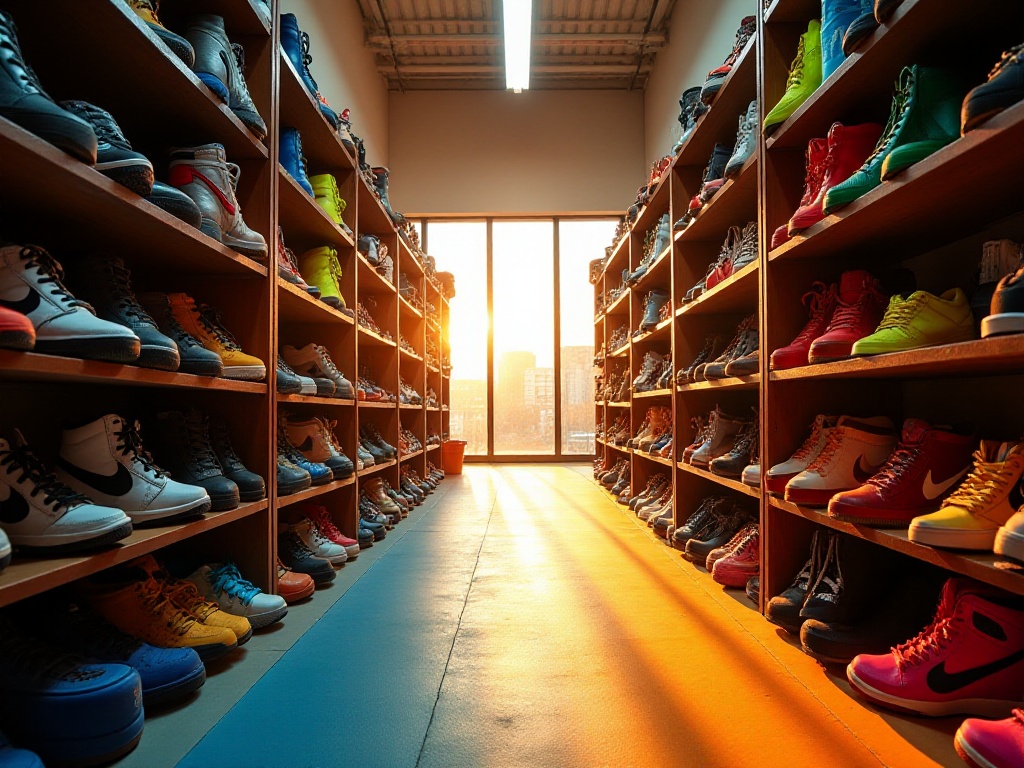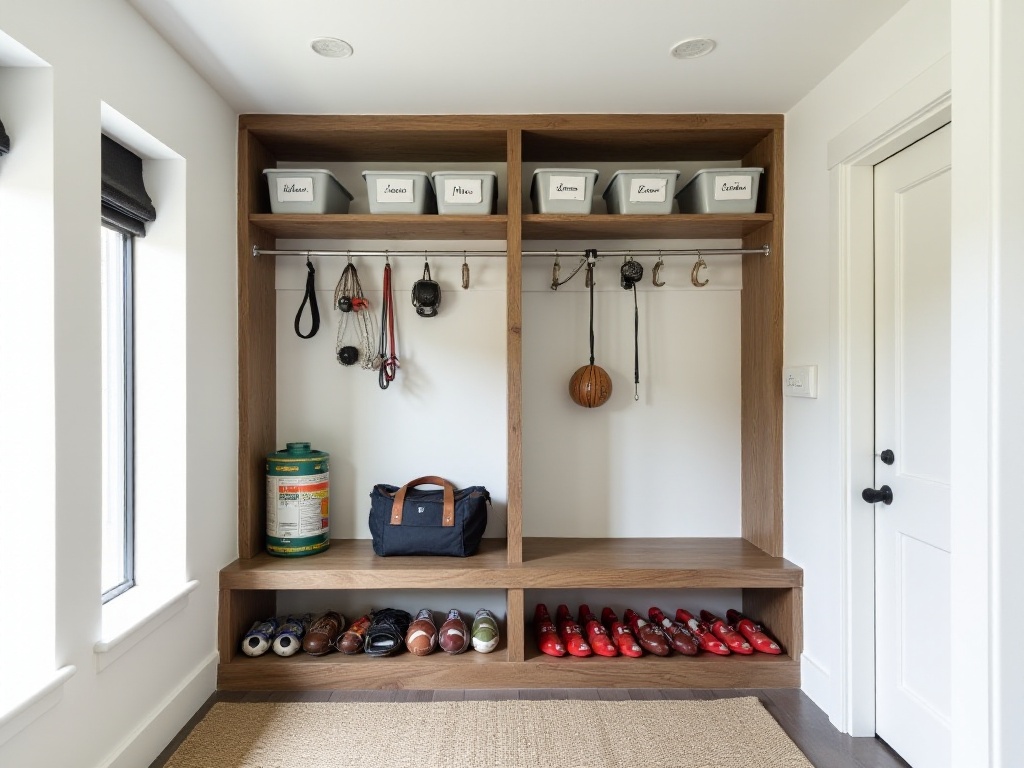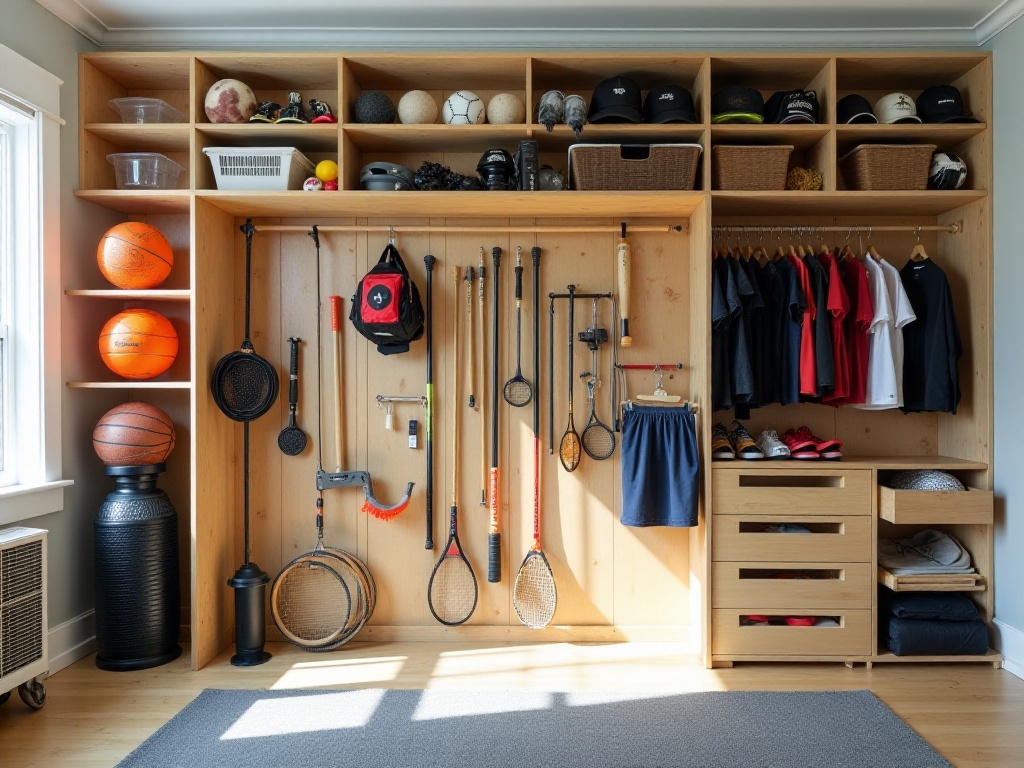Introduction
Organizing my home exercise equipment recently has been a real struggle, almost driving me crazy. My small storage room was like a black hole, with various sports equipment piled up chaotically: the basketball was squished in a corner almost deformed, the badminton racket was trapped under something, the yoga mat was all wrinkled, and the jump rope was tangled in knots. After digging around trying to find a dumbbell, I discovered it was under the yoga mat, leaving indentations on it.
To be honest, I can barely remember when I last used some of this equipment. The other day while looking for my tennis racket, I found it covered in dust, showing how long it's been since I played. As a fitness enthusiast, I deeply realize how important proper storage is. Without good organization, equipment not only gets damaged easily but is also very difficult to find.
After researching and experimenting for a while, I finally developed a super practical storage solution. Today I'll share my insights with you, hoping to help solve your storage troubles.
Fixed Storage
When it comes to storing exercise equipment, the key is utilizing wall and ceiling space. I came up with this solution after careful consideration. Think about it - floor space is already limited, and if everything is piled on the ground, you have to carefully step over things just to walk around.
I bought a multipurpose hook system online and installed it on the storage room wall. The best thing about this system is that it can be freely combined according to needs, with hooks of various sizes that can be arranged into different storage solutions. For example, I use extra-large hooks for bigger items like basketballs and soccer balls, which hang very securely. Smaller hooks work perfectly for badminton and tennis rackets, just right without taking up too much space.
You wouldn't believe how much space such a simple modification saved! All the sports equipment that used to pile up on the floor is now hanging on the walls, freeing up at least 3 square meters of space. Now I don't have to worry about knocking over other equipment while looking for something. Plus, everything hanging on the wall is very visible - you can immediately see where things are.
Speaking of ceilings, that's truly a treasure trove of space! I installed a track storage system on my garage ceiling, which is perfect for storing seasonal sports equipment. For example, my ski gear doesn't get much use but takes up considerable space. It used to be stuffed in a corner of the storage room, requiring me to move everything in front to access it. Now it's all hanging from the ceiling - just pull it down when needed and push it back up when done, without affecting floor space at all.
This track system has an unexpected benefit. Because the equipment is suspended, it doesn't directly contact the floor, so there's no worry about moisture or dust accumulation. I deliberately chose a high weight capacity model during installation, so it can easily handle heavy winter equipment like skis and poles.
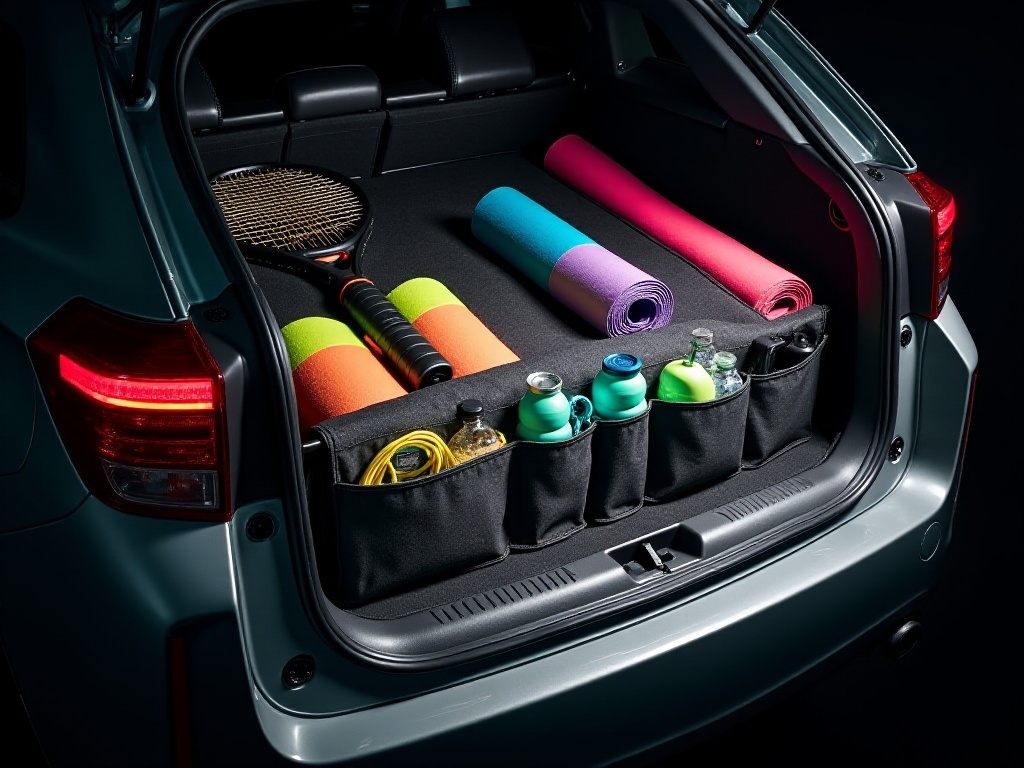
Mobile Solutions
For equipment that needs to be taken out frequently, I came up with a brilliant idea. I keep a collapsible storage box in my car, which makes it much more convenient when heading out to exercise. I carefully selected this storage box - its compartment design is very practical, with various sized sections that perfectly accommodate different equipment.
What I'm most proud of is that the dividers are adjustable, allowing me to modify the spaces based on different equipment sizes. For basketball, I remove some dividers to create larger spaces for the ball; for badminton, I divide it into smaller compartments for rackets, shuttlecocks, and wristbands, each with their designated spot.
Home storage is also an art. I specifically bought a set of bamboo drawer dividers, which are lightweight and moisture-resistant. Small items like sports clothes and protective gear are all categorized neatly, so I never have to worry about finding things. Wristbands and knee pads in one section, sports socks in another, and sports headbands and wristbands in yet another. Every time I need to change equipment, I can easily grab what I want.
These bamboo dividers have another advantage - they're very easy to clean. Equipment inevitably gets sweaty after exercise, but regular wiping with a damp cloth keeps the dividers clean. Plus, bamboo naturally has deodorizing properties, so even freshly used equipment won't leave any odors.
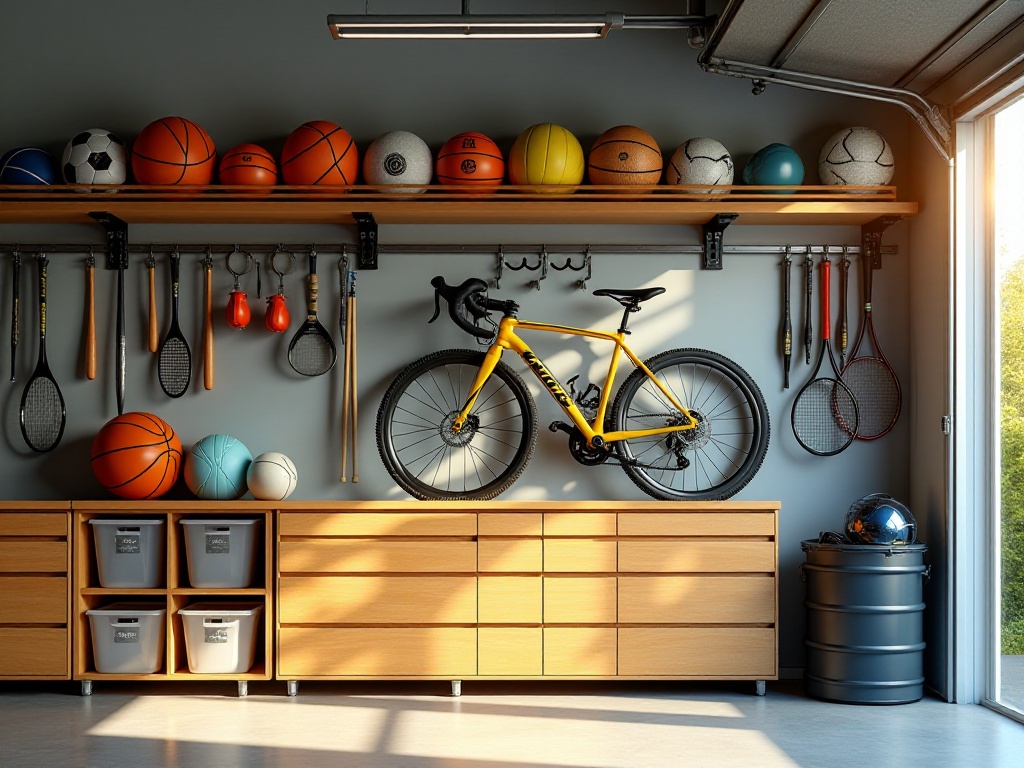
Classification Techniques
Classification is truly a science. After multiple attempts, I found that organizing by sport is the most practical method. For instance, I keep all basketball-related equipment together, including the ball, shoes, and protective gear. Tennis equipment forms another series, with rackets, balls, grip powder, and wristbands all in one place. The advantage is that when I want to play a particular sport, I can grab all related equipment at once, without having to search everywhere.
I also labeled each category with different colors. Orange labels for basketball items, yellow for tennis, and purple for yoga equipment. This makes everything instantly recognizable and much quicker to find. By my calculations, this organization system has reduced my search time by at least 60%.
Frequency of use is another important factor I consider. Equipment used weekly is placed in the most accessible locations. For example, my yoga mat, which I use almost daily, hangs on a hook right by the storage room door, within easy reach. Seasonal equipment, like ski gear, can be stored on the ceiling or in the back of the storage room since it's rarely needed.
I also arrange equipment based on weight. Heavier items go on the bottom, lighter ones on top. This not only makes retrieval easier but also better protects the equipment. For instance, dumbbells are stored on the bottom shelf, preventing damage to other equipment and making them easier to lift out.
Maintenance
Good storage doesn't mean the job is done - maintenance is equally important. I'm a planned person and set aside one day each month to check all equipment. This habit has significantly extended the lifespan of my gear.
First is checking ball equipment. I verify that basketballs and soccer balls have proper air pressure and inflate them if needed. Leather surfaces need to be wiped clean to prevent dust from affecting grip. Rackets also need regular maintenance, like checking if grips need replacement or if strings are loose. For protective gear, I check if Velcro is still secure and if foam padding has deformed.
I pay special attention to moisture prevention. During humid seasons, I place desiccant packets in storage spaces to prevent mold. For metal equipment prone to rusting, I apply a thin layer of rust-prevention oil. These small details might seem troublesome, but they keep equipment in optimal condition.
After each inspection, I note in my phone which equipment needs repair or replacement. This allows me to prepare in advance rather than discovering problems when I need to use something.
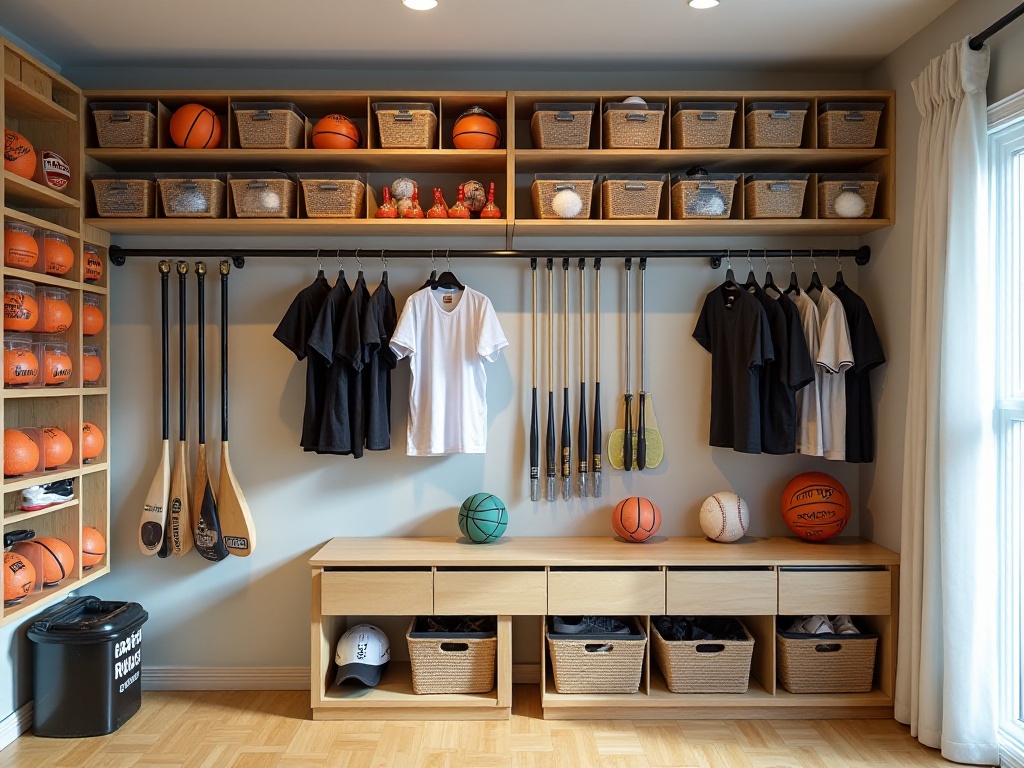
Update Mechanism
Honestly, exercise equipment tends to accumulate easily. Without regular clearing out, the storage room quickly fills with unused items. So I set myself a rule to do a major cleanup every six months.
The standard is simple: if equipment hasn't been used for over a year, I seriously consider whether to keep it. From my observation, about 30% of sports equipment in typical households sits unused. Rather than letting these items take up space and collect dust, it's better to give them to someone who needs them or recycle them.
I suggest making a list before cleaning, recording the usage frequency of all equipment. Then categorize them as "frequently used," "occasionally used," "rarely used," or "never used." For the latter two categories, seriously consider whether they're worth keeping.
There are many ways to handle unused equipment. If it's still relatively new, you can give it to friends just starting to exercise; if it's somewhat used, consider selling to secondhand sports equipment stores; if it's unusable, recycle it. This not only recovers some costs but also allows the equipment to continue being useful.
Conclusion
After this series of storage improvements, my exercise equipment has finally achieved a perfect "grab when needed, store when done" state. Whatever equipment I need is within reach; after use, everything goes back easily. It feels amazing!
Actually, the key to storage isn't achieving perfection in one go, but continuously adjusting and improving through daily use. The initial plan might have various inconveniences when implemented, but with timely improvements, you can always find what works best for you.
Looking Ahead
As more people emphasize home exercise, I believe smarter storage solutions will emerge in the future. In a few years, we might manage sports equipment through mobile apps or even use smart voice assistants to locate needed items.
We might even see automatic storage systems where equipment returns to its place with just one command. Sounds really cool! But until then, we need to make the best use of existing storage space, because even the smartest systems can't work without basic storage principles.


